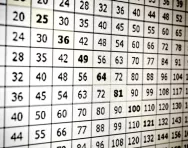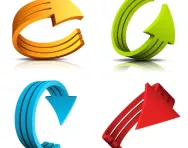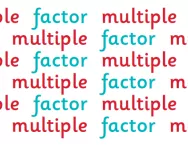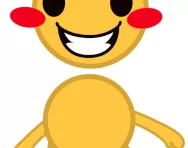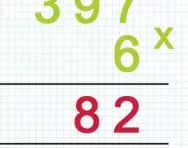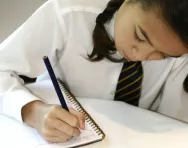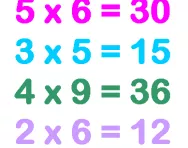Important update from TheSchoolRun
For the past 13 years, TheSchoolRun has been run by a small team of mums working from home, dedicated to providing quality educational resources to primary school parents. Unfortunately, rising supplier costs and falling revenue have made it impossible for us to continue operating, and we’ve had to make the difficult decision to close. The good news: We’ve arranged for another educational provider to take over many of our resources. These will be hosted on a new portal, where the content will be updated and expanded to support your child’s learning.
What this means for subscribers:
- Your subscription is still active, and for now, you can keep using the website as normal — just log in with your usual details to access all our articles and resources*.
- In a few months, all resources will move to the new portal. You’ll continue to have access there until your subscription ends. We’ll send you full details nearer the time.
- As a thank you for your support, we’ll also be sending you 16 primary school eBooks (worth £108.84) to download and keep.
A few changes to be aware of:
- The Learning Journey weekly email has ended, but your child’s plan will still be updated on your dashboard each Monday. Just log in to see the recommended worksheets.
- The 11+ weekly emails have now ended. We sent you all the remaining emails in the series at the end of March — please check your inbox (and spam folder) if you haven’t seen them. You can also follow the full programme here: 11+ Learning Journey.
If you have any questions, please contact us at [email protected]. Thank you for being part of our journey it’s been a privilege to support your family’s learning.
*If you need to reset your password, it will still work as usual. Please check your spam folder if the reset email doesn’t appear in your inbox.
Teachers' tricks for multiplication
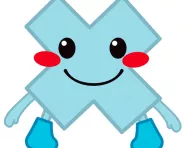
Start with multiplication as repeated addition
In KS1 your child will be introduced to multiplication; it's taught as repeated addition and your child might talk about arrays and tell you that they've been counting and drawing dots in maths.
Here's why: 4 x 4 Is four lots of 4, so written as an array of 4:
This shows the children what four lots of 4 really looks like. They can count in 4s, or to begin with just count all of the items, to get the answer.
As well as drawing arrays to help with multiplication calculations, they can also do multiplication as repeated addition using a number line. For example, if the calculation is 3 x 4 they could start on zero and make leaps of 3 four times to get to their answer.

Remind them that multiplication can be done in any order
Children will learn that, unlike division, multiplication can be done in any order; the result will be the same. It’s a good idea to suggest that it may sometimes be easier to flip the calculation around. For example, if the calculation is 5 x 9, they might find it easier written as 9 x 5 because they'll be used to counting in 5s.
Insist on multiplication tables
Learning times tables is considered as important as ever, although some schools put more of a focus on learning them by rote than others. Children should go into Year 5 completely confident in all their times tables. No matter how tedious your child finds times tables practice, it's worth it in the long term, so persevere!
In Key Stage 1, children learn to count in 2s, 5s and 10s. They may do this using a number line or a 100-number square.
You can help them at home by printing out a hundred number square and encouraging them to count in 2s, pointing to each number as they go along. They could colour in all the multiples of two and then put the number square up somewhere they will see if every day. Once they have got the hang of counting in a certain number, give them activities during everyday activities, for example: when you are driving to school, encourage them to count in 5s all the way along a certain road. When you turn a corner, ask them to count in 10s along the next road.
Once they've mastered counting in sequences children learn the 2, 5 and 10 times table and they should be confident with these by the end of Year 2. Make sure you test them as often as you can, but only for short bursts at a time; little and often is better than long sessions learning tables which will bore and tire them (and you!) out.
In Year 3, children learn their 3, 4 and 8 times tables.
By the end of Year 4, they should know all their tables up to 12x12.
Print out a colour-coded multiplication square to help your child spot number patterns and visualise times tables.
Turn multiplication into story problems
As with most areas of primary maths today, story problems play a part in the teaching of multiplication.
In Key Stage 1 children might face a multiplication word problem like:
Every day at lunch Jayden has 5 grapes in his lunch box. How many grapes does he eat at school during the week?
Here the children would have to consider that there are 5 days in the school week and there are 5 grapes each day. Therefore the calculation must be: 5 x 5 =. They could then draw an array of 5 lots of 5 grapes and count in 5s (or count each grape if needed) to get to the answer.
In Key Stage 2 a multiplication word problem might be:
A hat costs £4 and a scarf costs £2. Josie buys 4 hats and 6 scarfs. How much money does she spend altogether? Here they have to think of two separate multiplication calculations and work out that, once completed, the answers need to be added together.
Know the language of multiplication
It is really important to get your child used to the various different words associated with multiplication. Vocabulary related to multiplication includes: lots of, groups of, times, multiply, multiplication, multiplied by, multiple of, factor, product, once, twice, three times etc., times by, repeated addition, array, row, column and double.
Practise multiplication vocabulary by asking questions in various ways, for example:
- What is 8 multiplied by 9?
- Give me three multiples of 5.
- What is the product of 3 and 7? (This means: 'What is 3 multiplied by 7?')
- What is 5 times 4?
- Is 7 a factor of 14? (The answer is yes, because 7 can be multiplied by the whole number 2, to make 14.)
Learning multiplication facts helps with multiplying in different units
At school children will be encouraged to use multiplication in different areas of maths (space and shape, for example, or money maths).
They need to be aware of basic multiplication facts associated with money and measures, for example:
- There are twenty 5ps in £1 / ten 10ps in £1 / five 20ps in £1 / two 50ps in £1
- 100ml goes in 1 litres 10 times / 100g goes into 1 kg ten times / 10cm goes into 1 metres ten times
- There are four lots of 250g in one kilogram / 250ml in one litre / 25 cm in one metre
It might take a while to get the hang of these (and other related) facts, but once they know them off by heart, they will find problem-solving involving measures much easier.
Practise formal methods of multiplication
In Key Stage 2 one of the new multiplication methods taught is known as the grid method.
In Year 3, children will learn to multiply a two-digit number by a one-digit number. They may learn this using the grid method. In Year 4 they need to multiply two-digit and three-digit numbers by a one-digit number. In Years 5 and 6 they need to learn to multiply numbers of up to four digits by a two-digit number using long multiplication.
Use multiplication skills as a tool in KS2 maths
By the time children leave Key Stage 2 they should be competent problem solvers who decide independently which calculation method they need to use to solve all manner of problems. They will use multiplication:
- To work out percentages, fractions and decimals
- To work out areas of shapes
- To solve complex word problems, often with two or three steps, sometimes using a calculator.
Some examples of the kinds of problems they may come across in Years 5 and 6 are:
- What is 2/8 of 104?
- The area of a rectangle is 36cm². What could its width and length be?
- I have 5 cups. I put 450ml of water into each one. How much water have I poured out in litres?


